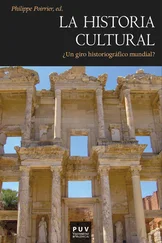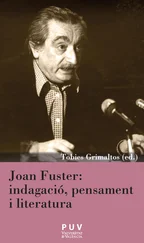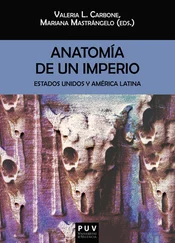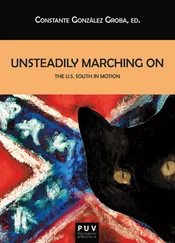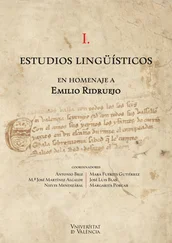Irina Kudriavtseva explores the South’s communities and contours in “Revisiting Southern Home Places: Insider/Outsider Dialectic in Southern Short Fiction.” Kudriavtseva analyzes different scenarios of departures from and returns to the South in short stories penned by Peter Taylor, Flannery O’Connor, Eudora Welty and Bobbie Ann Mason in an attempt to demonstrate how Southerners revisiting their home place in the South redefine their region. The temporary displacement and homecoming afford those returning a dual position of both insider and outsider to Southern culture. Paying attention to the social, cultural, psychological, and/or moral dimensions of characters returning to their home places in the South allows Kudriavtseva to problematize regional hierarchies and cultural stereotypes. The liminal position of these southern characters illustrates in-between identities and social roles suspended between different geographical and cultural settings of the heterogeneous South.
A different kind of Southern setting is explored in Szymon Wnuk’s “A Mythical Interpretation of the Southern Gothic in Cormac McCarthy’s Fiction.” Wnuk’s study of Outer Dark (1968), Blood Meridian (1985), and The Road (2006) intersects with several fields of critical inquiry: region as an imagined place, Southern Gothic and Christian mythology. Reading these novels through the lens of Christian mythology opens new interpretative directions in McCarthy’s criticism. Tracing McCarthy’s literary journey outside the conventional boundaries of the South, Wnuk analyzes McCarthy’s transposition of Southern Gothic to a non-southern landscape. Wnuk sets out to depict how an interplay of Gothic convention and Biblical references destabilizes regional identities of the imagined South and transcends traditional boundaries of Southern regional writing.
The final article in this section, Elisa Coria’s “Between Radiance and Darkness: The South as Grotesque in The Heart is a Lonely Hunter ,” also re-evaluates traditional Southern gothic spaces – this time, however, in connection with the literary mode of the grotesque in Carson McCullers’s debut novel. The space of a mill town in Georgia in the 1930s, and the southern landscape of that time in general, evokes themes of seclusion, exclusion and eventual transgression. Coria demonstrates that McCullers’ characters suffer from loneliness and isolation due to the repressive dictates of a society which assesses the value of individuals based on a combination of class difference (the poor), sexual orientation (the queer), physical attributes (the ugly), or ideology and worldview. What transpires from Coria’s analysis is a belief that the grotesque allows McCullers to express concerns about southern society and destabilize normative identities of social pariahs who live in “the margins between their hometowns and the dream of a world outside of the South, but they also inhabit parts of this southern space that are in-between: these are liminal spaces that represent the divide, or threshold, between here and there” (Coria).
The title of Part III – “The Southern Urge to Tell” – is a riff on the subtitle of Fred Hobson’s seminal work Tell About the South: The Southern Rage to Explain , in which Hobson explores the southern urge toward self-examination. The final part of Ex-Centric Souths offers an informative reassessment of various ways in which Southerners narrate, discuss, and explain their region to others and to themselves. This section opens with Constante González Groba’s “Revisiting The Heart is a Lonely Hunter : Carson McCullers’s ‘Ironic Parable of Fascism’,” which reconsiders the novel through the prism of how manifestations of fascism can shed some light on southern society and culture. Providing a rich historical and social context, González Groba comments on how Jim Crow racial practices and policies of the 1930s and early 1940s led to the South being associated with Nazi Germany (the plight of Jews in Germany vide the situation of African Americans in the South). His insightful analysis of the spiritual and psychological, rather than political dimensions of fascism traces how McCullers dramatizes the lonely and alienated individual’s susceptibility to fascism. Using the concept of “authoritarian personality” and the rise of totalitarianism as a critical framework, González Groba examines the central position of John Singer, a lonely deaf-mute who becomes the confidant of four different individuals: a teenage girl, an alcoholic socialist, a black doctor, and a quiet and reflective bar owner. Seen from this analytical angle, Singer becomes a fitting metaphor for the Southerners’ preference for fantasies such as southern tradition or white supremacy over self-analysis which would challenge self-destructive fantasies existing at the basis of complex and inconsistent reality.
The next contribution in this section – Michał Choiński’s “‘But why?’ Racial Guilt and the Southern Paradox in Willie Morris’s North Toward Home and Lillian Smith’s Killers of the Dream ” – is devoted to an analysis of two parallel scenes in two Southern social autobiographies from the rhetorical and figurative perspective. Both novels depict youthful narrators who do not understand racist rules and are desperately in need of explanations from their parents. Interrogation of literary depictions of the daily paradoxes of life in the Jim Crow South of the 1930s reveals the extent to which the narrators had to confront the logic of racism, and thus revisit their moral principles and remodel their behavior accordingly. Choiński illustrates how prohibitions connected with trespassing on two color-coded spaces – a white home and “unpainted houses” in the segregated area of a hometown – combined with lack of parental explanation and the suppression of curiosity “initiate the complex act of assuming a new perspective on the social and racial issues taken for granted in their childhood” (Choiński).
Marie Liénard-Yeterian’s “ The Night of the Hunter : The Storied South on Screen” explores the way storytelling is staged in the film and examines a strong narrative impulse (which is channeled through storytelling) in two artistic forms: literature and cinematography. In her analysis of both the literary original and its cinematic adaptation, Liénard-Yeterian pays attention to the staging of storytelling through stories, songs, dreams and secrets. Storytelling is undoubtedly one of the elements of Southernness conjured up when one thinks and talks about the South. While storytelling is not an inherently Southern phenomenon, it allows Southerners to make sense of reality and connect with others through shared experiences. In both narratives – the novel and its cinematic adaptation – telling stories (both traditional tales and those of personal experiences) and telling secrets bring people together and at the same time tear them apart. Liénard-Yeterian’s analysis proves that as a result of adaptation strategies, including elision, omission, and addition, the film “does not sustain the terror suggested in the book, staging a formulaic Hollywood ending.”
Closing the collection is Giuliano Santangeli Valenzani’s exploration of how contemporary Southern travel guides manufacture a Southern identity which fascinates and attracts northern tourists. “Advertising the Deep South in 2018: An Analysis of Destination Image Through Louisiana, Mississippi, Alabama and Georgia Travel Guides” delves into how tourism of the former Confederacy narrates the South’s cultural heritage: from picturesque and pastoral plantations and the Lost Cause mythology, through the troubled history of the Civil Rights Movement. Relying on Karen Cox’s tourism studies, Santangeli Valenzani analyzes the South’s modification of its marketing and promotional campaigns in travel advertising and tourism literature. Travel guides and brochures of the Deep South reveal that the region lured white tourists with a self-projected image of an imagined world of the antebellum romantic past. The South, with its rich culture and history, became a commodity while tourist attractions became consumer products which were to satisfy the tourist gaze. Santangeli Valenzani pinpoints the late 1970s as a watershed for reconceptualization of the region. Now instead of a sanitized version of white Dixie, promotional images tell a story of a more ethnically inclusive South. With the demands of the “black tourism market,” travel guides begin appealing to black tourists also, even if mostly in the context of civil rights tourism and black heritage tourism.
Читать дальше



